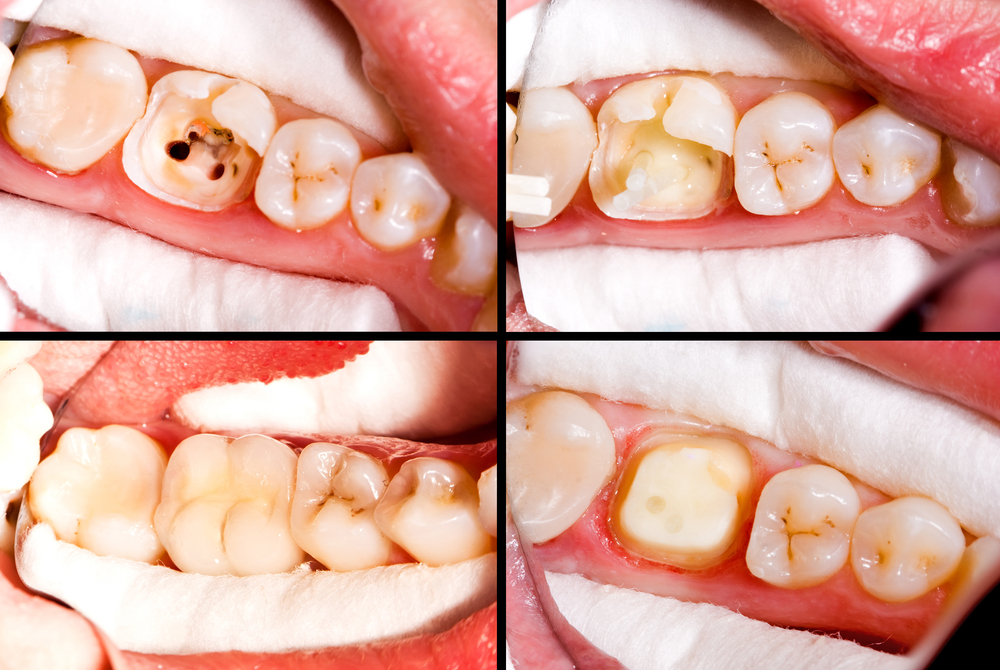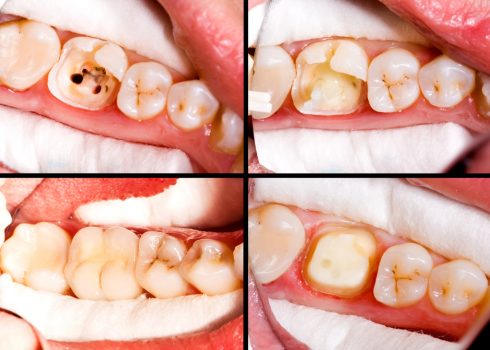Introduction
Good oral hygiene is essential in creating a positive first impression. Unhealthy and cavity-ridden teeth not only destroy a person’s first impression but lower their self-confidence as well. Fortunately, there are several types of fillings available for teeth today. But it puts a person in a dilemma over which type of filling to choose.

Why Composite Fillings
Fillings are used for several reasons:
- Decayed teeth
- Worn teeth
- Chipped teeth
- Cracked or broken teeth
- Closing space between two teeth
Composite fillings are also called as tooth-colored fillings as the dentist has complete control over the shade of the filling and can blend them in with the patient’s teeth. Thus, composite fillings are preferred by people who need a more natural look which other types of fillings can’t provide.
Composite fillings are used in small to medium sized fillings that are subject to the moderate pressure of chewing. They provide good durability and resistance and can be used on either front or back teeth.
How Are Composite Fillings Placed
Composite fillings are mostly placed in one appointment. The dentist will begin by applying a local anesthetic in the area around the tooth to be filled. This will make the area numb and the process painless.
Next, an air abrasion drill or a laser will be used to remove the decayed area. The dentist may choose any instrument depending on various factors like comfort level, training level, location and extent of the decay.
After testing the area for removal of all the decay, space will be prepared for filling by cleaning the cavity of bacteria and debris. The dentist may have to put a liner to protect the nerve if the decay is close to the root.
The filling material is then put in layers and each layer is hardened using a curing light. After this process, the dentist will trim off excess material, shape the composite filling and polish it off.
Advantages Of Composite Fillings
Composite fillings have several advantages over other types of fillings:
- Aesthetics
The major advantage of composite fillings over other types of fillings is its aesthetic quality. Since the color and shade of composite fillings can be manipulated, they can be almost invisible to spot.
- Supports tooth structure
Composite fillings have a quality of bonding with the existing tooth structure. This restores the tooth’s physical integrity.
- Tooth-sparing procedure
Since the composite fillings bond with the existing tooth structure, less healthy tooth material has to be removed in this procedure. Traditional filling materials like amalgam depend on the shape of the hole thus more healthy tooth material has to be removed for them to work.
- Versatility
Composite fillings can be used to treat or repair multiple issues like decayed, chipped, broken or worn teeth. Amalgam fillings can only be used to treat cavities.
- Repairability
Minor damage to composite fillings can be easily repaired by adding more composite. Amalgam fillings usually require complete replacement.
Disadvantages Composite Fillings
- Composite shrinkage
The curing process can sometimes lead to composite shrinkage. This makes the bonding surface inferior. The shrinkage can also lead to secondary caries, that is, subsequent decay.
- Durability
Composite fillings are less long lasting than amalgam fillings in areas where there is the constant stress of chewing or in bigger cavities.
- Chipping
Composite materials can chip off the tooth.
- Skill and training required
The success and longevity of composite fillings depend greatly on the skill and technique of the dentist.
- Time and expense
Due to the need to keep the working area completely dry and the process involving the application of multiple layers, composite fillings may take up to 20 minutes more than amalgam fillings. This may make children restless and the procedure difficult for the dentist. Due to the longer time involved, the dentist may charge a higher fee than for an amalgam filling.
SEE ALSO: Gingivitis: Causes, Symptoms, Prevention, And Treatment
After Effects Of Composite Fillings
- Sensitivity
Tooth sensitivity to pressure, air, sweet or temperature after the procedure is fairly common. It is recommended to consult the dentist if the sensitivity does not recede within a few weeks.
- Pain
The patient may experience pain around the filling whenever they bite. This might the result of interference between the filling and other teeth. The filling will have to be reshaped to resolve this after effect.
- A toothache
Toothache-type pain is experienced when the treated decay is very deep and may indicate an unhealthy tissue. Root canal therapy may be required to deal with this pain.
- Referred pain
Patients may sometimes feel pain in the teeth besides the treated teeth. This is not a serious issue and should likely recede on its own over a couple of weeks.
Dr. Scott Simpson, an expert dentist in Tigard, City in Oregon, says that the best filling is, of course, no filling. He also suggests good oral hygiene practices and regular dental checkups to prevent cavities in the first place and thus, keep your teeth healthy for a lifetime.

